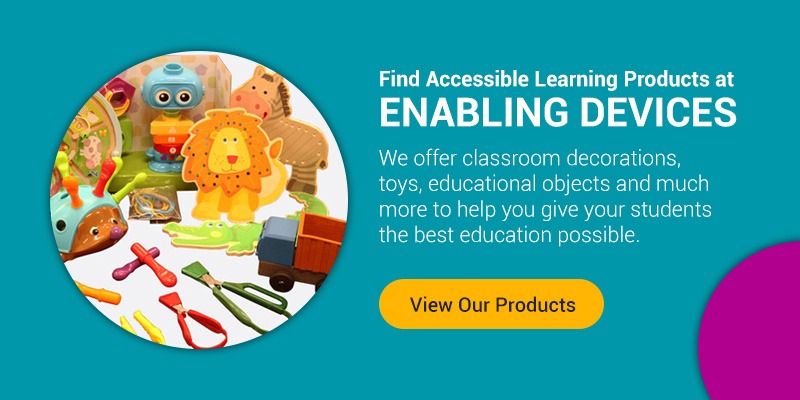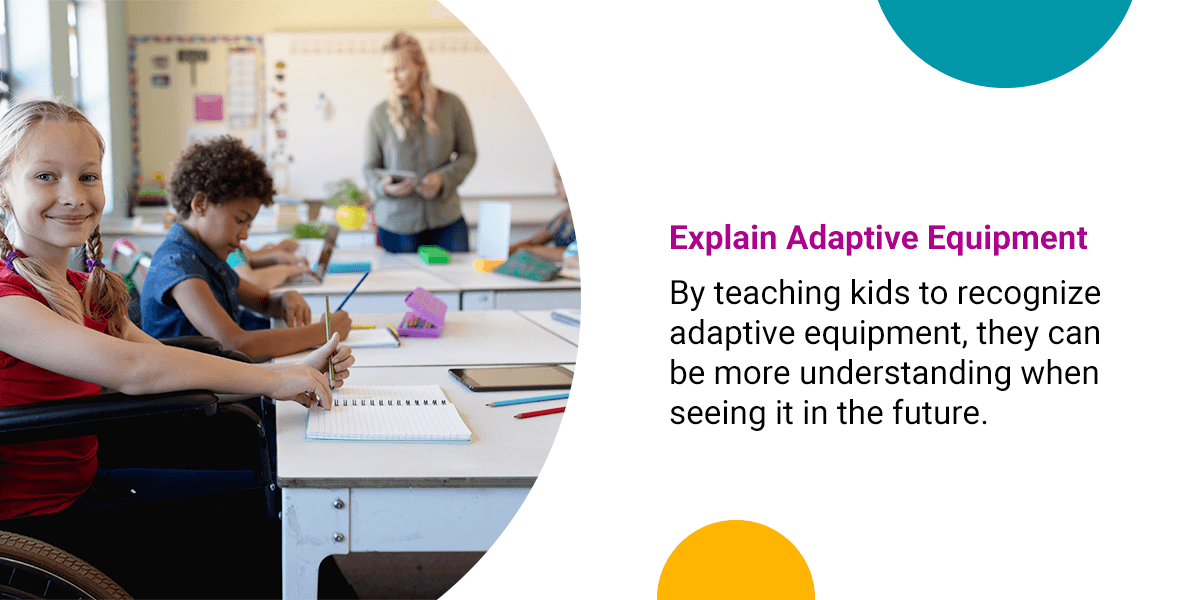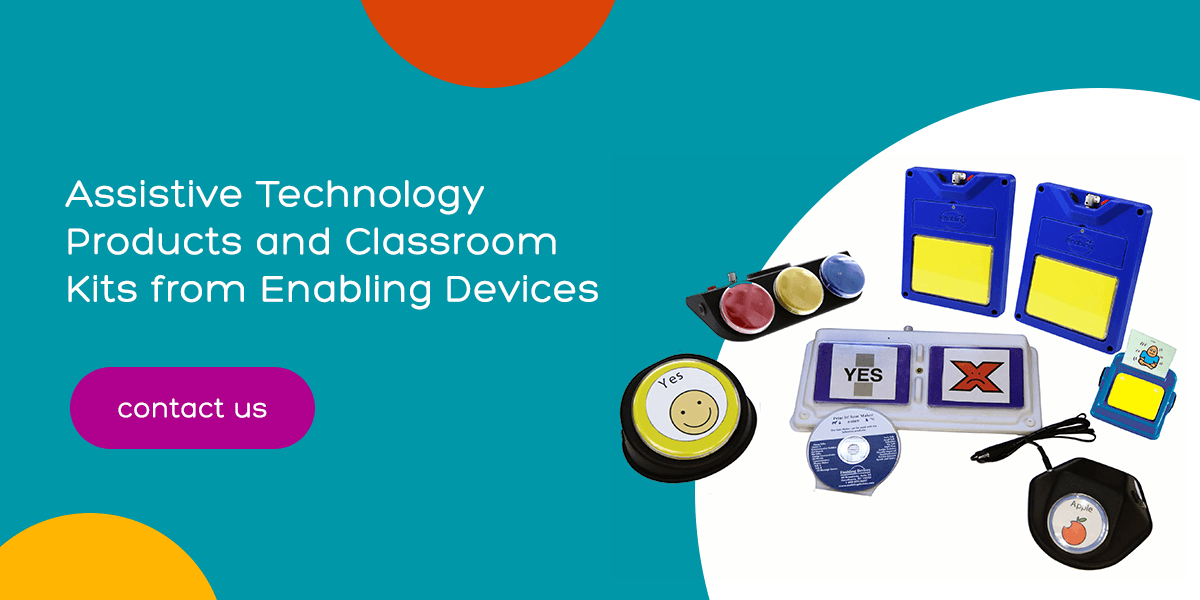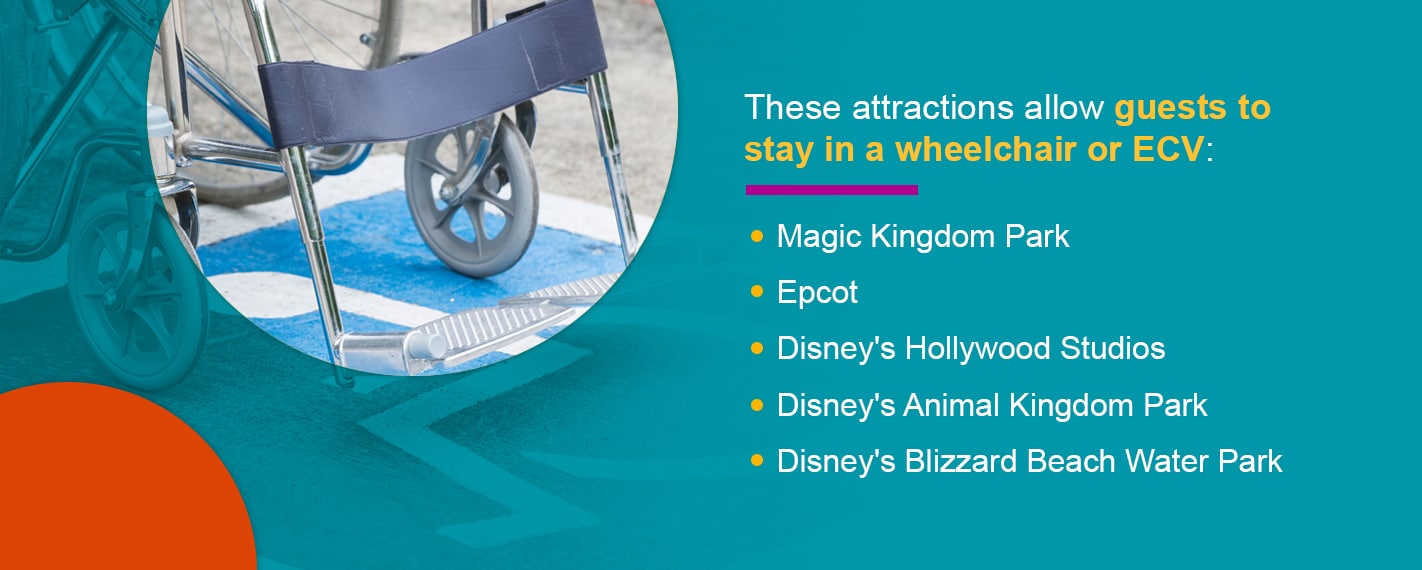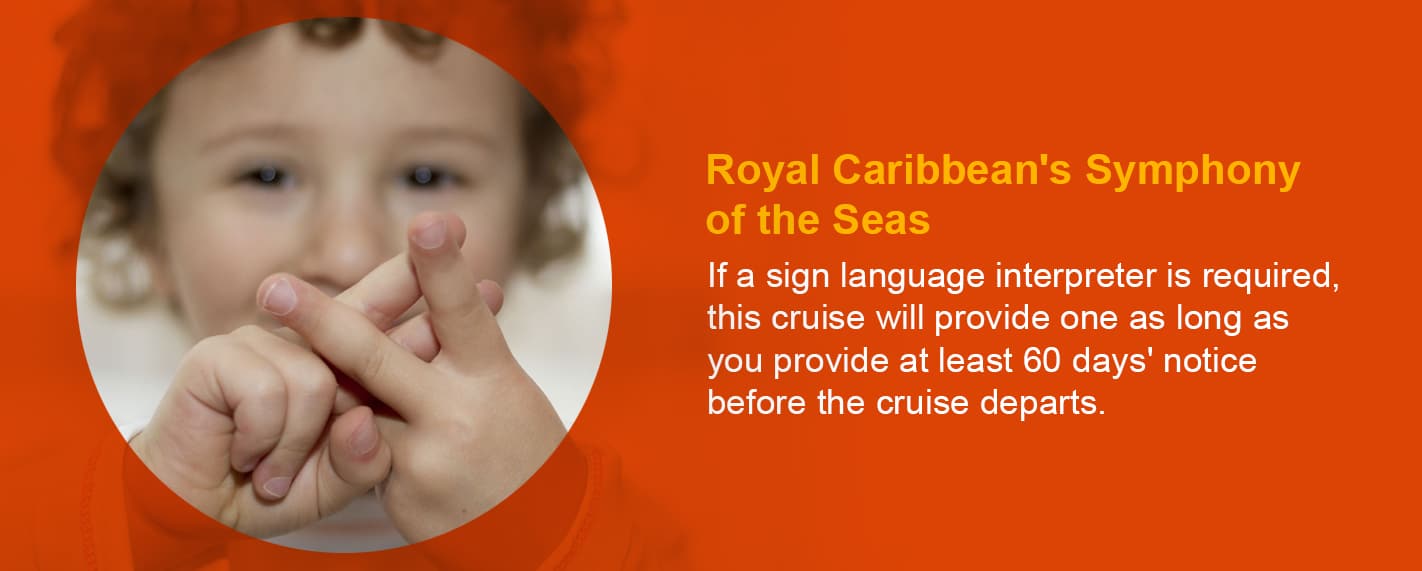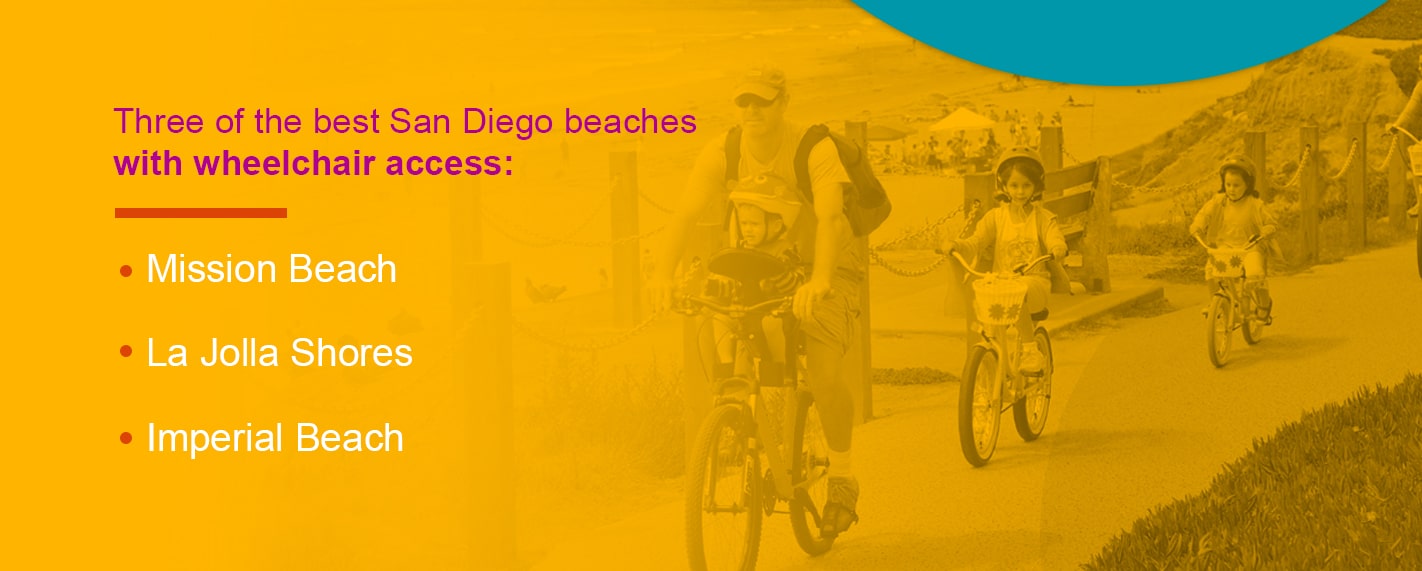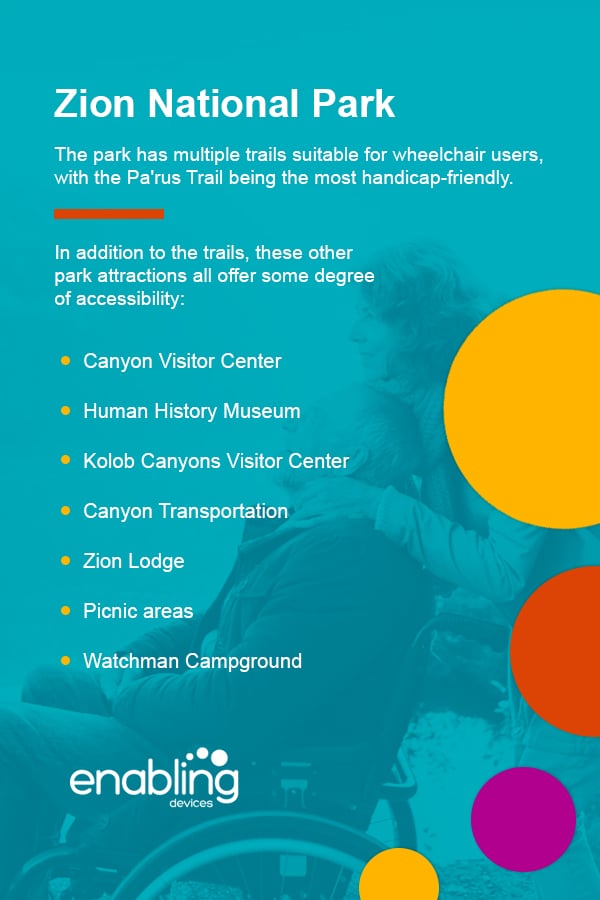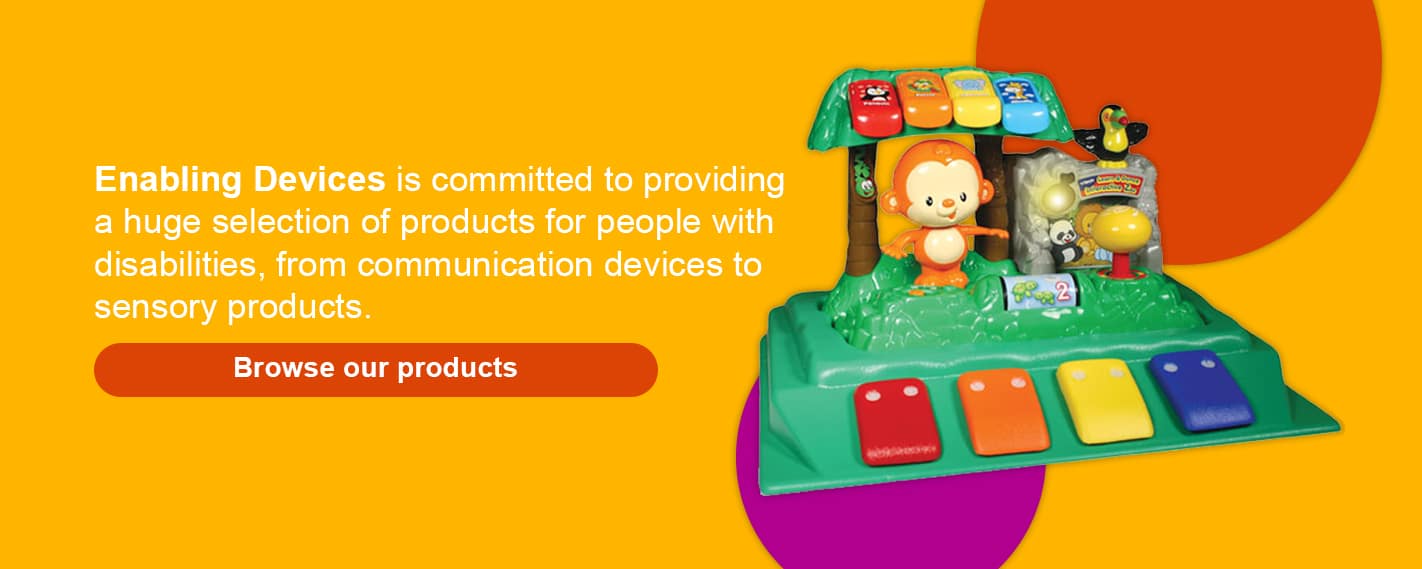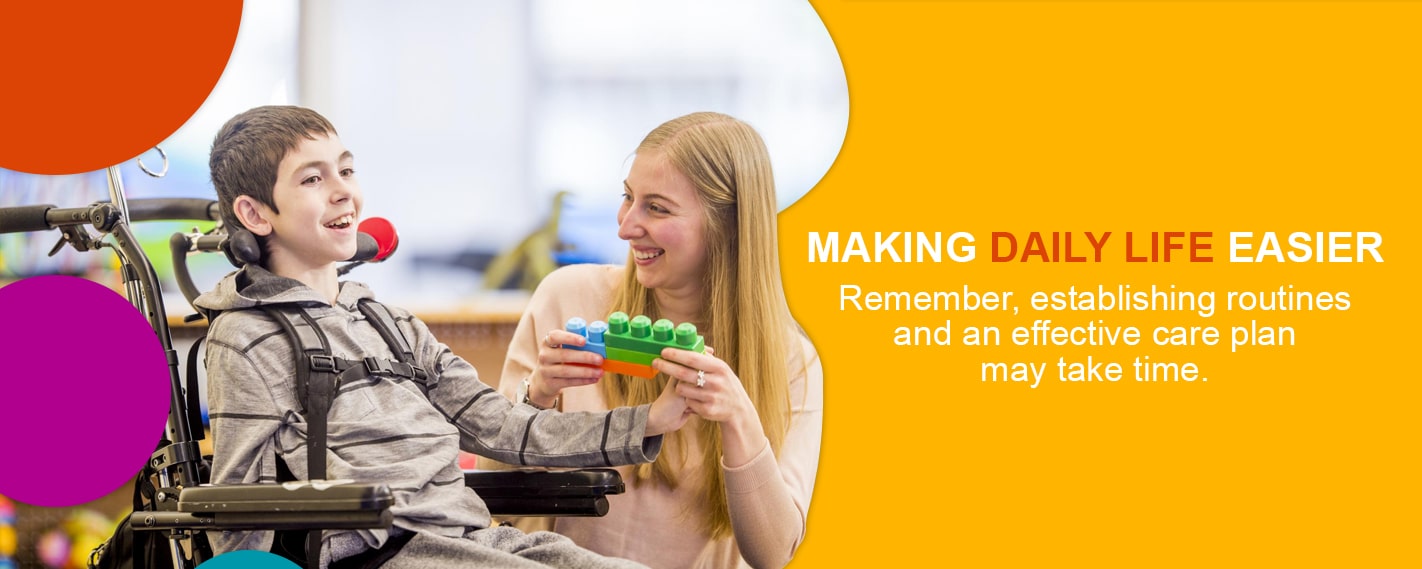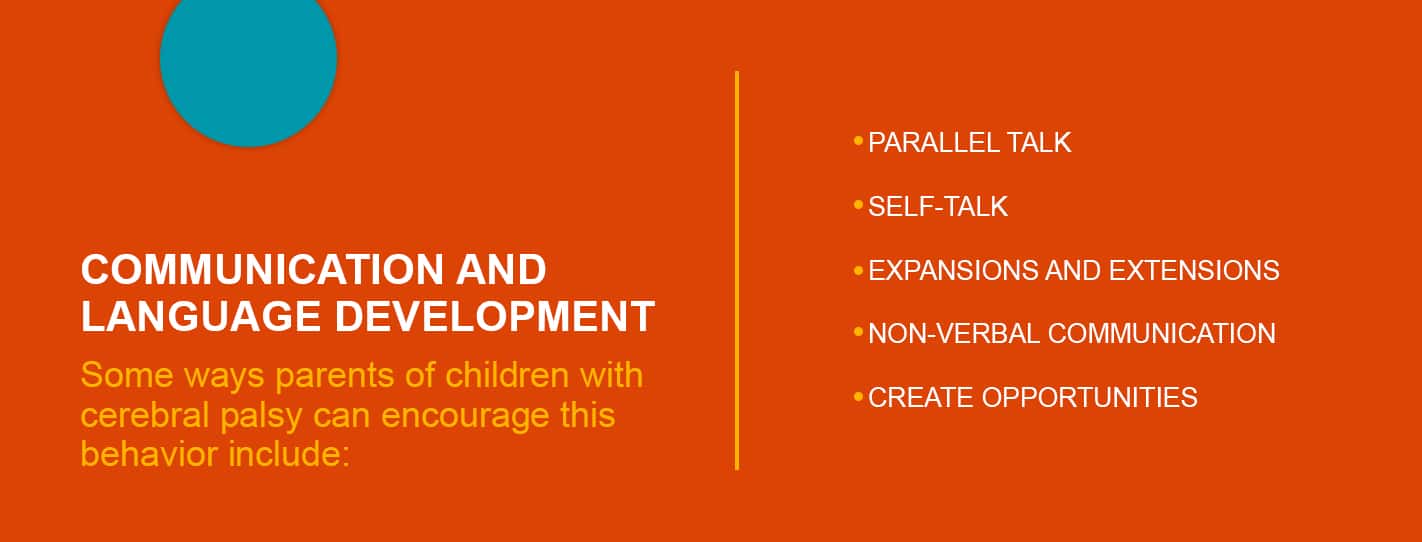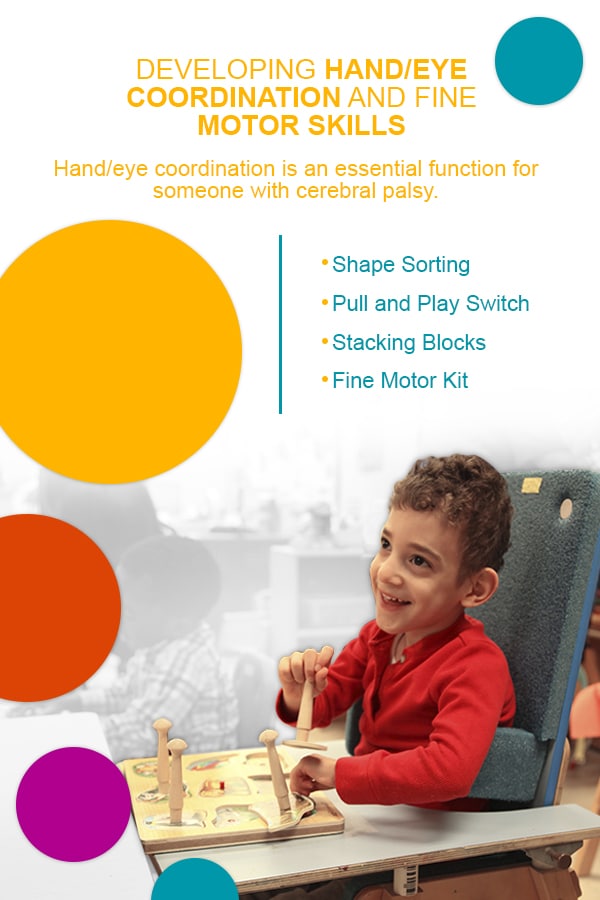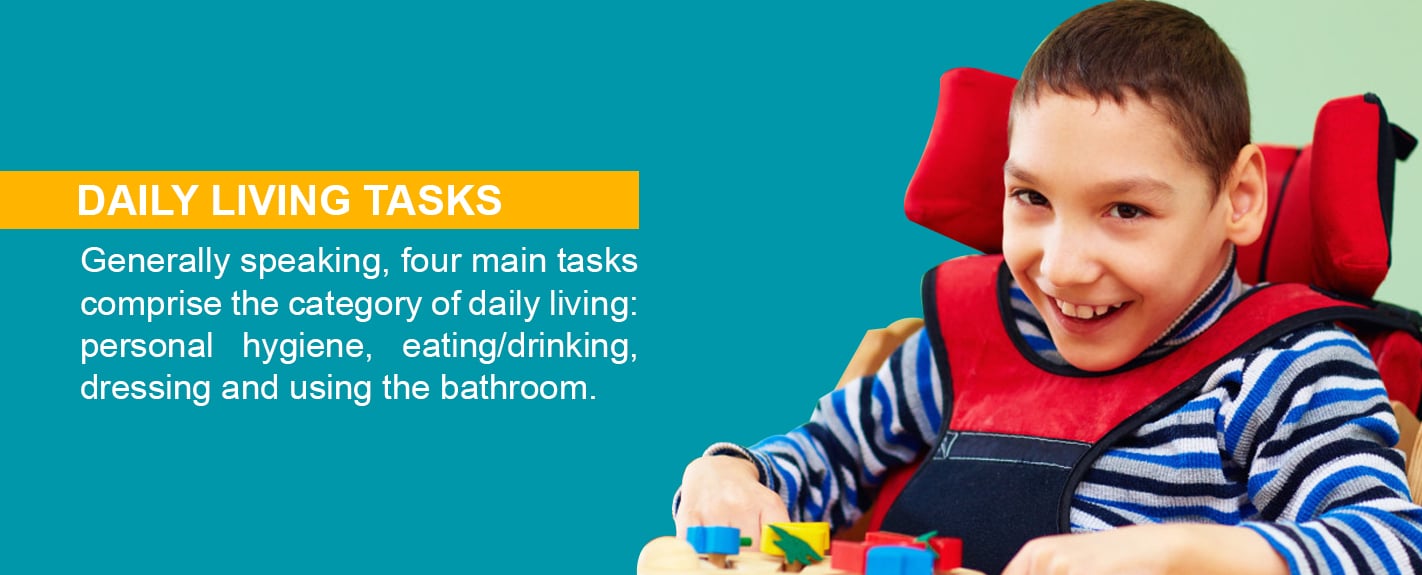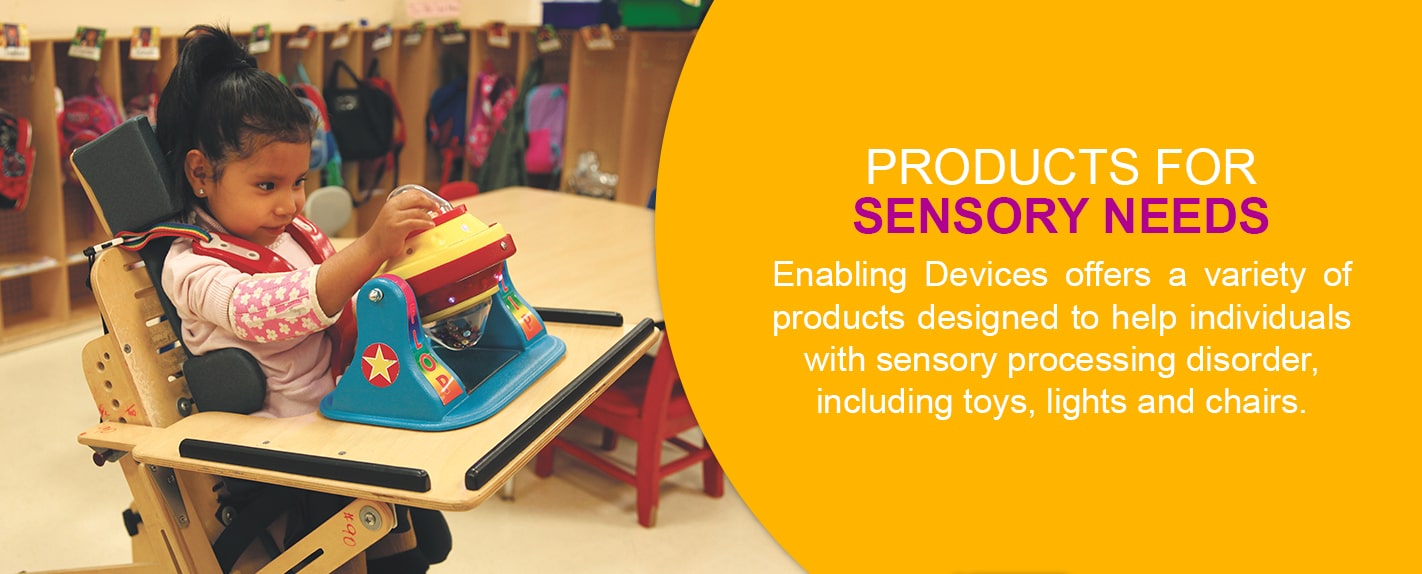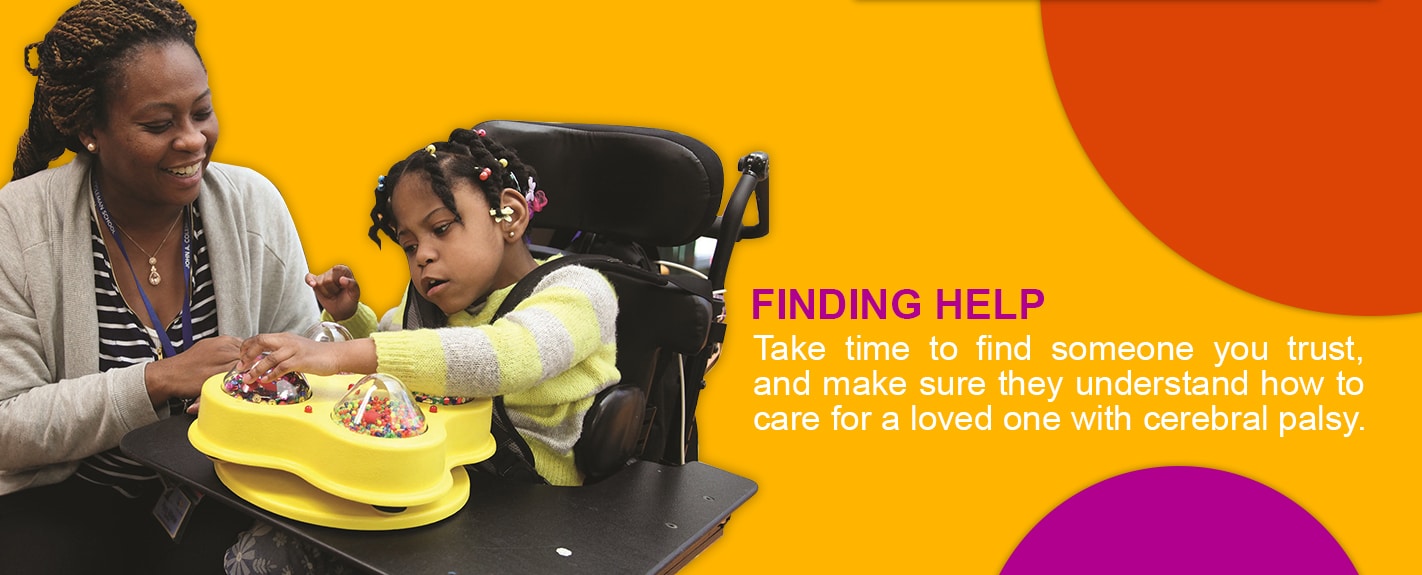Back to school time means preparing yourself and your room for a new group of students. Special education teachers often have different considerations when getting ready for the school year than general education teachers. Each student in a special education classroom has unique needs to think about when planning your classroom design, layout and theme. In addition to the physical room, you also want to consider the classroom environment and how you can make your students feel comfortable and ready to learn.
Whether this year is your first teaching special education or you’ve been in the field for years, you can still use some helpful tips and ideas. Check out these ways to make your classroom fun and interactive, as well as tips for keeping your cool throughout the year.
Tips for a Special Education Teacher
Start the year off right by reorienting your mind for the new school year with some handy tips for teaching students with functional needs, commonly referred to as special needs. You don’t want to leave anything out of the planning stages, so your room will be ready for your students on the first day. These tips will keep you on task with the most important things to do and remember when starting the new year.
1. Communicate and Keep People Informed
Communication is critical in any teaching position, but it becomes especially important for special education teachers. Maintain open communication channels with parents, school administration and coworkers who will also work with your students. These people all have essential roles in helping your students learn and thrive in your classroom. In fact, communication is so vital that it may be mandated by law by keeping up with individualized education programs (IEPs).
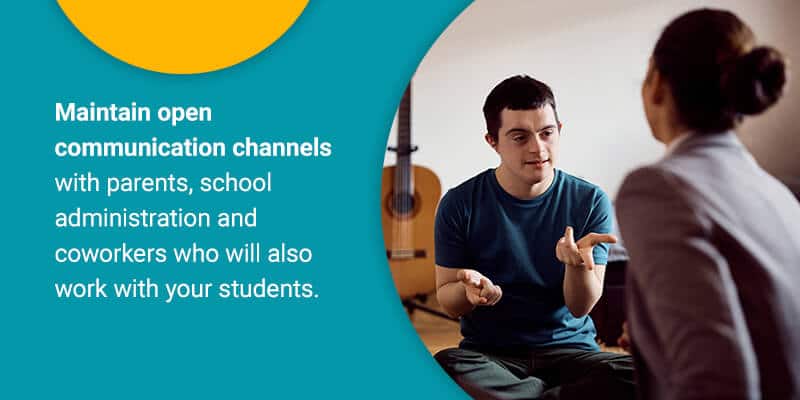
2. Review and Prepare Tools for Your Students’ IEPs
Your students’ IEPs outline the accommodations you need to make for each student’s learning needs in the classroom, extracurricular doings and nonacademic activities. These documents are critical to your success with your students. Knowing how you need to modify your classroom and teaching will help when you create lesson plans for your students with special needs.
If possible, generate one-page summaries of each IEP. These summaries will help you learn about each student’s needs. The single-page references will make it easier to review information quickly from the IEPs in the future.
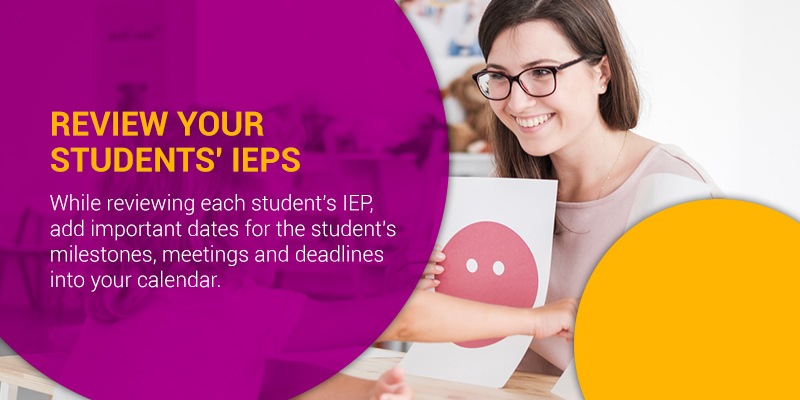
While reviewing each student’s IEP, add important dates for the student’s milestones, meetings and deadlines into your calendar. Doing this planning at the beginning of the year will ensure you don’t miss significant events in any of your students’ learning schedules.
Keep a list of supplies you will need for your classroom to fulfill the requirements in the IEPs. Because your students will have different needs, look for products that make learning more accessible to them, such as:
3. Establish Daily and Weekly Schedules
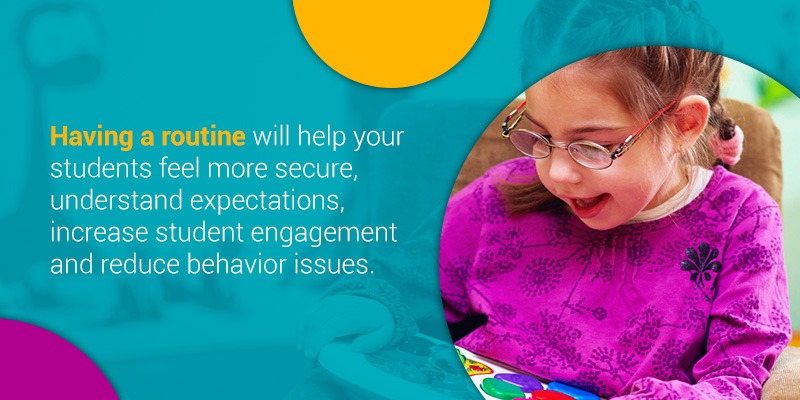
You will need to establish regular schedules for your students. Having a routine will help your students feel more secure, understand expectations, increase student engagement and minimize behavioral problems. The repetitive nature of an established schedule in your classroom gives your students the chance to learn what to anticipate.
Special education teacher organization becomes vital when you try to maintain a set routine with your students. But when you have an established schedule, planning your days happens faster because you can set out materials for several lessons or days in advance. Routines make organizing your classroom easier and help you better prepare for every learning opportunity.
When you organize your classroom and have lesson materials ready, your students won’t need to wait for you and possibly lose focus. Students who know what to expect, especially those who have conditions like autism that increase rigidity in thinking patterns, will be more prepared to learn during the given lessons.
Don’t be too rigid in your routine, though. Fire drills, canceled school days and other unexpected events can happen to delay your plans. Be flexible enough that such incidents don’t derail your lesson plans. Even after a disruption, you should return to the routine as soon as possible to help your students feel safer in the predictability of the schedule.
4. Remember Every Day Is a New Day

All teachers get frustrated during their work. You may benefit from compartmentalizing each day. Don’t carry stress from one day to the next. It can be easy to remember yesterday’s meltdowns, but it’s important to start each day fresh and not bring up past bad behavior.
Just because you treat each day as a new beginning, you still need to keep your students accountable for their actions. Don’t wait to discipline a student. If you do it the following day, neither of you remembers the incident well enough for the consequences to have an effect. Instead, correct student behaviors the moment they do them. Once corrected, move on from the event.
If you need professional help, don’t wait to talk to another teacher or seek out special needs teaching resources. Online sources from experts will help you with tips for classroom management and behavior issues you may experience.
To maintain your mental health, you can:
- Keep a positive outlook.
- Separate yourself from your stresses at the end of the day by finding something rewarding to engage in.
- Find some means of building yourself up and resetting your stress levels at the end of the day or during the weekends, such as exercising, visiting friends or practicing a hobby or skill.
By taking care of your needs, you will be better prepared to take care of your students and their requirements.
Tips for Designing Spaces Intentionally in Special Education Classrooms
When setting up your classroom, you need to do so intentionally. Every piece you have and its placement must fulfill a role in your teaching. Even the special education classroom ideas you use need to relate to your instruction. Find out some handy tips for making your room beautiful and practical.
1. Keep It Age-Appropriate
Though you will likely have students of varying actual and development ages, you still need to keep your classroom age-appropriate. The students will probably have a specific age range, such as 5- to 12-year-old children or teenagers. Use these age groups to find appropriate room decorations.
Also, wait until after you review the IEPs before decorating your room. You need to know the needs of your students before choosing classroom materials and décor for them. Some students may need visuals, educational devices or seating that differs from their peers’ needs or those of a general classroom.
2. Space Is Critical
Perhaps more important than the furnishings and devices in your classroom layout for your students with special needs is the unused space. You will need space to move around as well as allowing your students free movement.
When setting up a classroom for students with special needs, allow for different spaces with specific uses, such as a calming area, teaching area, reading area, play area and individual learning area.
Calming Space in Special Needs Classroom
A calming area will give your students a place to relax when they feel overwhelmed. Include a comfortable place to sit, such as a swing, rug or bean bag chair. This area could also serve as a sensory space or center in an autism classroom.
Sensory Space or Sensory Room for Special Education Classroom
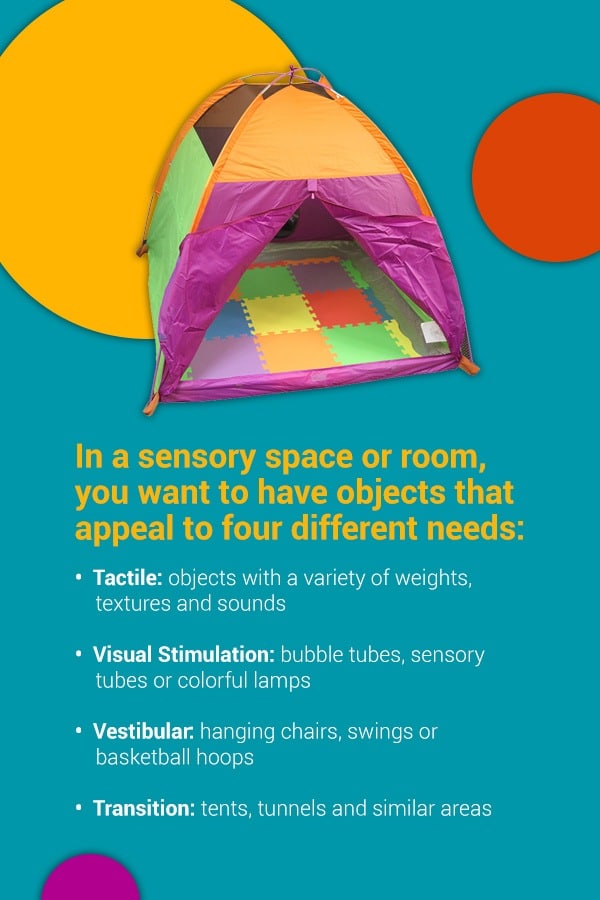
In a sensory space or room, you want to have objects that appeal to different needs, such as:
In addition to having a place for students to explore sights, sounds and sensations, a sensory space also allows room for a group area. Here, you can conduct class lessons and have student presentations.
Teaching Area in Special Needs Classroom
The teaching area includes your desk and personal workspace. Teach students about respecting the boundaries around your desk by correcting them if they try to slip into your area.
Play Space for Special Education Classroom
Don’t forget that students need to play. Having a play area gives your students an outlet for their energy and a way to interact with adaptive or adapted toys. Also, consider adding activity centers to the play area. These toys have a variety of actions the students can do to stimulate multiple senses. Additionally, you can browse our products by your teaching goals in our menu — activate, communicate, develop, educate and play.
Older students who engage in reading and writing will need an area for these activities. Have a bookshelf for books, and nearby, keep a supply area of paper, pencils and other writing supplies.
Individual Learning Area for Special Education
Student desks give your classroom members space of their own. This space provides them with a working area as well as an escape if they need individual time. Instruct students to return to their desks as a transition during your routine when you need to set up a new area.
3. Match the Room to Your Teaching Style
How do you teach? Do you use one board or two? Do your students sit individually or in groups? Arrange your classroom to complement and enhance your teaching methods.
If you have students regularly work in groups, do they work on the floor in a circle or collaborate at tables? Should you have students do individual work more often, allow plenty of comfortable space for them around their desks.
4. Make It a Fun Environment so Students Feel Comfortable
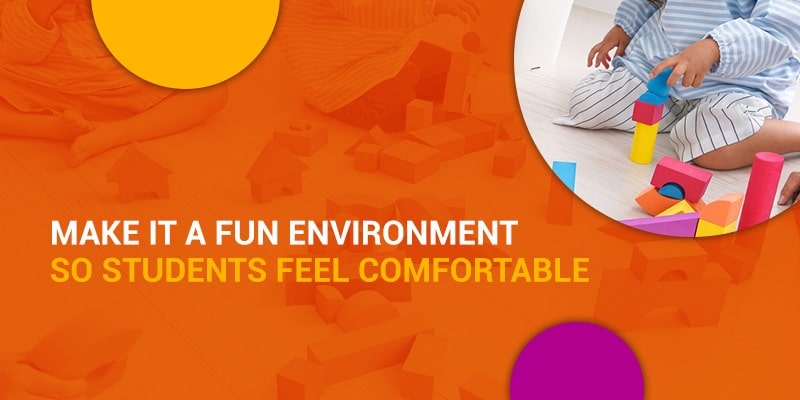
You want any special education teacher themes you use to be fun and applicable to your students. Using bright colors makes matching up decorations easier. Green, yellow, red and blue are good colors to choose.
If you want a basic color scheme rather than using specific special education classroom decorating ideas, use a different color for each area of your room. Classroom kits in each area of your room can assist with teaching.
These and other fun activities for special education teachers will make your class more enjoyable and accessible to all your students.
Designing a Special Education Classroom for Elementary School Students
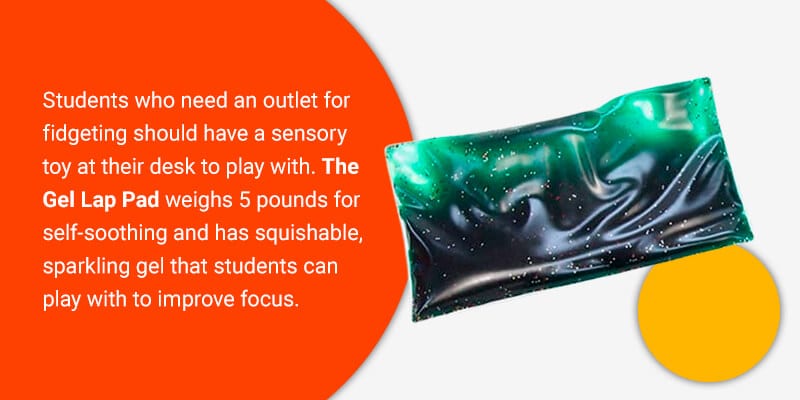
Special education classrooms for elementary students should support learning and adapt to students’ unique needs and abilities.
Use a center or hub system to move students around the classroom and engage them in different lessons. Set up a special activity for each area, such as independent work, art, science and math. Rotate students through the small group areas throughout the day, so they can learn all the concepts.
Help students keep their assignments and materials organized with labeled bins. Homework, worksheets and school supplies will have their own place. Classroom-wide schedules can be color-coded by student, so each student can keep track of their activities.
Students who need an outlet for fidgeting should also have a sensory toy at their desk to play with. The Gel Lap Pad weighs 5 pounds for self-soothing and has squishable, sparkling gel that students can play with to improve focus.
Your classroom can also have a sensory space with calming or energizing toys for all students to play with. The Sensory Exploration Tent is a fun way for students to increase their sensory awareness by playing with a wood fidget puzzle, Tranquil Turtle and other toys.
Designing a Special Education Classroom for Middle and High School Students
Middle and high school students in a special education classroom — similar to those in an elementary school — need the right support to learn and be independent. Special education classrooms for high school and middle school students should be responsive, as every student has unique needs.
In many special education classrooms, group work for the entire class period can be challenging. Create a center or station setup where students can focus on a different activity in each area. Station ideas include individual IEP and curriculum work, group activities and life skill tasks. You can also set up a waiting area if one student needs to wait on another student to move on to the next station.
Keep learning materials organized in color-coded and labeled bins. This organization helps students find their own materials, which is important for building independence and assessing their ability to understand and follow directions.
Encourage group work and social skill development by clustering student desks together. Each desk cluster can have a unique activity, like working on a lesson or playing a tabletop game like Bingo and Hi Ho Cherry-O to help students recognize numbers and interact with each other.
Special Education Décor Ideas

Classroom décor can be functional to reinforce your lessons and make the space a fun place to learn. For décor in special education classrooms, less is often more, as too many decorations may overstimulate some students.
For small group workspaces, use a Fluorescent Black Light Carpet that displays neon colors to help calm students. You can also turn the visuals and work materials from lessons into your classroom décor. Print images or concepts on colored paper and attach them to your board. Set up a Go! Board in a central location to keep students on task.
Special education teachers can create themed bulletin boards that add value to the classroom. Themed boards organize learning materials and reinforce concepts. For example, you can have a schedule board with the day’s activities, a word wall with new vocabulary terms, or a goal board with your class’s goals for the day, week or year.
For your printed paper décor, laminate the paper and adhere it with magnets or mounting putty. The lamination preserves the paper to prevent fading and tearing. You can use these visuals every year, saving time and money with your special education classroom decoration.
Special Education Classroom Themes: A Room for Everyone
Are you interested in using room themes for your classroom? If so, think through if you would like to make regular changes to your classroom’s appearance. Will you have the time to make seasonal changes to your room? Or do you want to change it based on current lesson themes?
Choosing age-appropriate themes becomes critical for creating a space that will benefit your students instead of distracting them. Your room layout should still have separate working areas. These spaces will guide your placement of themed decorations. Need some inspiration or tips? Check out these ideas for special needs classrooms.
1. Camping Theme
Back to school themes for special education may include aspects of summer or look forward to the new school year. Even students who have never slept in a tent can appreciate a summer tie-in with a camping theme. You can also use this theme at the end of the year as a kick-off to vacation.
Set up your teacher’s desk as the “Park Headquarters” or “Ranger’s Station” with a sign on the front and a ranger’s hat on the desktop or hung on the wall behind.
Call the reading area or the group work area the campfire. You can use colored light to replicate a campfire. If you already have a tent in your sensory area, you may use that in the campfire area.
Bring in potted plants to make the whole classroom feel like it’s outside. Even if you don’t have a forest around you, the greenery will bring a bit of nature into your room. Your theme could have an extra benefit.

Greenery in your room may have an added benefit of encouraging student engagement. Adding plants through classroom design may improve student performance.
2. Seasons Theme

If you feel ambitious, consider a seasons theme that will need changing four times a year. Because the room changes a few times a year, students get the interest of looking at new décor without the stress of changes that occur too frequently.
You don’t have to add decorations for holidays like the Fourth of July or Valentine’s Day. To make this theme easier for yourself, keep each season generic. The fewer specifics you have for the season, the less often you will have to take down and put up new decorations.
For summer, try a beach theme. Beach balls in the sensory or play area, sunglasses on your desk and beach towels for the students to sit on are a few ways to customize your room.
Fall décor can include fall landscapes. Continue the theme by using orange, brown and red color schemes in your classroom’s learning areas.
Winter themes may but don’t have to include holidays. Focus on a snow theme to stretch out this theme long after winter break.
Just as you don’t have to have Christmas decorations during the winter, you also don’t need Easter decorations for your spring theme. But you can still have bunnies, flowers and pastel colors.
If you have a bulletin board, consider putting up a paper tree and changing the leaves with the seasons.
3. World Theme
A world theme is an ideal tie-in to your geography lesson plans. You can set up each section of your classroom as a separate “country” with items to show the geography and culture of the area. This theme teaches your students the names of some countries while giving them a fun cultural activity.
Give students passports to check in at each station in your room. They can collect a sticker from each “country” they visit until they fill their passport.
4. Crayon Theme
Bright colors around your classroom make a visually appealing learning environment while teaching your students about art. Use a dominant color for each section of your class and shades of that color for accessories. Doing so teaches students about the variety of colors in the spectrum.
You can expand this theme from just crayons to art by incorporating art supplies or kits into the different areas of your classroom. Encourage creativity by incorporating art projects into your lessons. Painting, drawing, coloring, clay molding and similar projects encourage tactile and visual stimulation. Of course, you want to adapt the plans to your students’ learning needs.
5. City Theme

Label each of the areas of your classroom with different buildings in a city. Refer to these places when giving students directions to add to the fun.
For example, name your desk “city hall.” As the head of the classroom, you have a job similar to a town mayor.
The play area can be the “park” or “public pool.” Just as residents of a town play at a park, your students will use the play area for recreation.
Student desks can be “downtown” because students work there just as people work in a downtown region. The correlations between these two locations can increase with the addition of tape on the floor around the desks to resemble city streets.
For classrooms with a reading and writing area, label it the “library” if your students use it more for reading. For writing, call it the “town newspaper.”
When you call your students to the group work area for lessons, refer to it as the “community center.” Residents of a town usually meet in such a place to collaborate on ideas, just as your students do when they come to the group work area of your room.
Browse the Lineup From Enabling Devices to Get Inspired
Start the year by equipping your classroom with the products your students need for an accessible learning experience. You’ll find everything you need at Enabling Devices. We offer classroom decorations, toys, educational objects and much more to help you give your students the best education possible.
If you need more ideas for your room themes, browse through our products at Enabling Devices. We have a wide range of products, toys, electronics and accessories to accommodate students of all abilities, including:
You’ll even find special education classroom resources and ideas and informative special education blog posts on our website.
Browse our products and resources for special education teachers to prepare for back to school. Contact Enabling Devices for more information or assistance finding the right products for your special education classroom.
